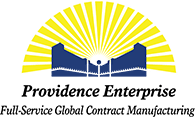A Spectrum of Possibilities: Medical and Cosmetic Applications of Light Therapy
For millennia, sunlight was revered for promoting good health. Then, it was discovered that too much sun drastically aged skin and increased the risk of skin cancer. New wisdom advised people to stay out of the sun…until it was found that more health issues around the world were caused by underexposure than by overexposure.
Breaking down the sun
Light therapy moved on from the idea of “light” as an all or nothing deal. Sunlight is made up of a full spectrum of visible and invisible light and, within that spectrum, different wavelengths have been shown affect moods and the body differently.
Light therapy isolates the beneficial properties of wavelengths within the spectrum to deliver the amount and type of light an individual requires for healing and overall health. Most light therapy devices steer clear of “harmful” ultraviolet light, while others – such as those used to treat vitiligo – harness it. Where white and blue light trigger migraines, green light devices have been shown to reduce their frequency and severity.
Common Uses of Light Therapy by Color

This list is far from exhaustive. When effective, light therapy is an excellent alternative to medications and other treatments because it is generally safe, pain free, non-invasive, and devoid of side effects.
Thanks to an upsurge in interest by the scientific and medical communities, new and ongoing studies are giving hope to people with dementia, brain injuries and bipolar disorders. In 2020, trials started in France to find out whether light could be used to reduce the symptoms of Parkinson’s disease. Other research has explored the potential of both blue and red light therapies in the fight against Covid-19.
How to reach people with the right light
There are a number of light therapy devices for both professional and personal use. The range and popularity of personal use devices is apparent from a quick search on consumer shopping sites such as Amazon.com, which returns in a listing of thousands of products, many with hundreds or thousands of user reviews. The most common types of light therapy devices are lamps, lightboxes, hand held devices and wearables.
- Lamps are light tubes, bulbs or armatures and typically treat a patient by treating their surroundings. Hospitals install them in intensive care units to support their patient’s circadian rhythm (thereby avoiding common complications such as insomnia, digestive problems and mood problems) or in operating rooms to aid in disinfection.
- Lightboxes are portable appliances with panels that give off concentrated light of a specific wavelength. Many are designed for home use – they frequently come equipped with a timer to deliver the right amount of exposure. Among the most common types of lightboxes are those that mimic daylight in order to prevent seasonal affective disorders and lightboxes to promote healthy skin tone and texture.
- Hand held devices can be easily manoeuvred to target specific problem areas. Widely used in dermatology, they treat acne, remove unwanted hair and reduce scarring.
- Wearables come into direct contact with the user and include LED-fitted glasses to lessen the effects of jet lag and face masks for skin beauty routines. Of increasing popularity are blue light devices that are worn in the mouth to activate the teeth whitening properties of special gels.
It is important to note, that because these devices are pain-free and non-invasive, they are generally considered safe for treating people of all ages, including children.
Hitting the Right Wave
While laypeople have become more familiar with terms such as “red light therapy” and “blue light therapy”, science requires devices to be far more exact. Color as we perceive it depends on wavelength which is measured in nanometers (nm). The visible light spectrum runs from 380nm to 700nm which, considering that 10 million nanometers equals one centimeter, is a very small band.
Effective light therapy is about finding and applying the optimal frequencies to specific conditions. It has been proven, for instance, that neonatal jaundice is best treated by 460 to 490nm “blue” light.
Effective light therapy device manufacturing then, depends on getting the wavelength right. Only 510-530nm “green” light has been shown to prevent migraines while most other types of light make the symptoms worse. A small deviation from the right wavelength and a device intended to heal scars could cause burns instead.
Manufacturing Challenges and Opportunities
As with any technology, engineers have to be aware of the their best current options. Many halogen and fluorescent light devices, for example, are now using LED lights, which reduce costs and extend a product’s life.
Engineers also need to understand the technical complexities of nailing down the right frequency for their device, not to mention keeping it there. Maintaining the correct frequency is tricky, since the delicate balance can be upset by any number of external factors, from machine vibrations to handling to humidity to temperature to radio waves from nearby equipment. Internally, a part or component within the same device can also sabotage its efficacy by interfering with the frequency. Device casing must be carefully designed and consist of protective layers of the right materials to ensure long term stability.
Not that this should prevent companies to developing their light therapy concept. As of last year, the global light therapy market was worth $874 million. That number is expected to reach $1 billion in 2025 and surpass $1.2 billion by 2027. Understanding (or having a partner who understands) what is needed in terms of engineering, technology, manufacturing and assembly offers endless opportunities to enter this lucrative and expanding market.
Would you like a copy of this post to share?
Other Featured Resources
About Providence Enterprise
Providence Enterprise is a Hong Kong medical device contract manufacturer of Class I and II medical devices with manufacturing in China & Vietnam. We specialize in electro-mechanical assemblies and high-volume disposables. We are FDA registered and ISO 13485, ISO 14971, ISO 14001, ISO 27001 certified. Our capabilities include fabricating tooling for silicone rubber and injection molded plastics, clean room injection molding, electronics, clean room assembly, and sterilization.















































